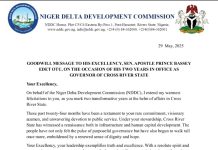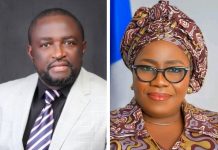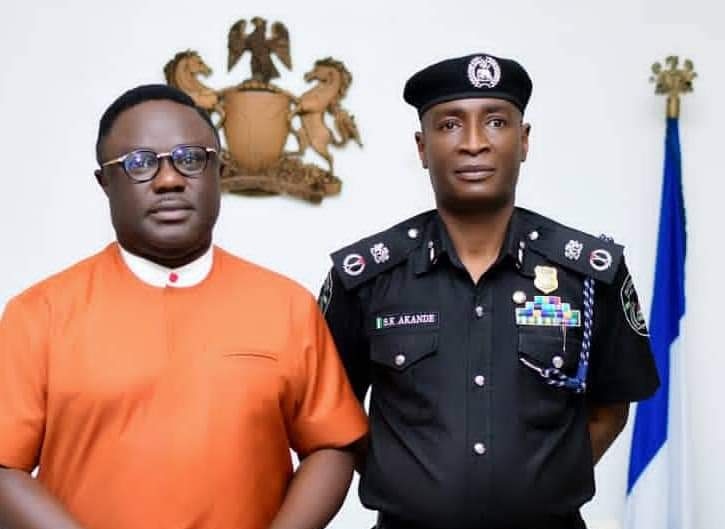
Emmanuel Undie|16 November 2015|6:00am
This article is borne out of sympathy that not many of us may be aware of the technical implication of the things we say and the terms we use daily especially where communication is involved. And by
communication, I mean your phone calls, your Internet, your whistling, etc. There are a whole lot of things involved when you pick up your phone to talk to the next person. At times, someone may even be
sitting right beside you with his phone on. Try to call the phone and a sweet lady’s voice tells you sorry the phone is switched off or not reachable. No…but you can even touch the phone! But sorry…it is not
‘reachable’ at the moment and there is nothing you can do. Sometimes, your ‘airtime’ is even reduced from the balance you knew you had on your phone before that lady’s voice came on. Sometimes, you are on the phone and the call cuts off. At times, you can hear the other person but the he/she doesn’t hear you. These are all problems caused not by the
network but by the network providers (Network providers are your MTN, Glo, Airtel, Etisalat, etc.)
In Nigeria, we have the popular MTN, Glo, Airtel, Etisalat, etc. If you know what I know, you would know that those people are actually ripping Nigerians off. Of interest is our ‘Superhighway’ project in the making. Let us not rip ourselves off
here in the State. There is nothing like 4G LTE for the Cross River State ‘Superhighway’ whether through the tunnel or out through the forest,
underground or airborne. We are not ready for it yet. Sit tight, buckle up and enjoy the ride. Difficult as the task is, I’ll do my best to make it snappy and as simple an everyday language as possible. This space and time is actually not enough to cover these issues in great detail. I feel tempted to write a
long article but I think I should rather break it down into a few pieces. Let me do a little general
introduction and then talk about the implication where our ‘Superhighway’ is concerned. On another good day, we will take on other related issues that help us relate well with our GSM cellular phones.
Introduction
Telephone services started in those days on systems platforms that we used to call analog systems (both networks and phone devices used to
run on analog systems). An analog system usually refers to a device (like a phone, radio, television,etc) that takes information and relay it in
a continuous manner through a medium. This medium can be physical lines, etc. but in a
continuous form where a little input gives rise to a little output on the reception side. If you raise your
voice, the information is taken and passed through lines to the other side and it is received as it was
initiated from the other side. You cannot for example, low your voice on one end and receive a
higher voice delivery at the other end.
However, digital system refers to one where information is passed around in binary format. Binary ordinarily means 0 and 1. Whenever ‘digital’ is involved, electricity also MUST be involved. That is why in
the past, you did not have analog telephones having battery or current connected to them. It was a
wired connection from the phone company to your box. Digital requires electricity to change your
analog voice sounds into ‘digital’ format that is transmittable through a digital line (If I tell you I am
not struggling here, I am lying. Please, bear with me. If you have questions about the terms or for
more explanations, please, ask me. I’m struggling to pass the message so everybody can understand)
Basically, it means when you pick up your phone and make a call or want to browse, as you click or
dial a number, what goes out of your phone into MTN or GLO etc is a bunch of zeros and ones. These zeros and ones are arranged in a certain way to represent the information you are sending. If
you cough, or say hi or say ‘come’ on the phone, the device(phone) takes this sound and generate a
bunch of 0s and 1s in a certain manner and order and pushes them across, facilitated by your battery
power(which supplies the electric current needed to facilitate the conversion to digital form for
transmission across to the other side.
In computer electronics, these zeros and ones are called bits. When you talk digital electronics, you are talking about processing things in bits. (you have used the
word megabytes or MB as you call it-when you talk of buying MB so you can browse or do Facebook-this
is where it is derived from so follow me carefully, it’s not difficult to understand). The bit is the smallest
storage ‘size’ or unit in digital computing. Eight bits equals one byte. Storage media like your flash drive or your smart phone's drive where you store your photos, videos, and SMSs store information in
bytes. A byte has 8 bits subdivided inside it. So one bit holds either a 1 or a 0. Eight bits hold a
combination of 1s or 0s in eight separate spaces. These eight spaces together is called a byte. So
when you type an A on your phone, the phone understands it to be eight pieces of 1s and 0s in a particular format. If you type 25 it is stored in 16 spaces-8 bits for the number 2 and another 8 bits for the number 5. So your device needs 2bytes to
store number 25. Now get a table and put these numbers in:
8bits=1Byte
1024 Byte=1Kilobyte (1kB)
1024KB =1Megabyte(MB)
1024MB =1Gigabyte (GB)
1024GB =1Terabyte (TB)
1024TB =1Petabyte (PB)
1024PB =1Exabyte (EB) and the list goes on and on. (It is Bytes with a capital B not Bites and it is Megabytes not Megabits. It is not 1000KB but 1024KB that make 1MB. Remember 8bits equals 1Byte. 1000KB is not divisible by 8. But 1024KB is divisible by 8 because only 8bits represent a
character, letter or number. That is why 1MB is not 1000KB but 1024KB I believe we are clear here.). Another little piece of information to know
here is that when transmitting this information, we measure the smallest piece that can be transmitted per second. So you will hear about Kilobits (not Kilobytes) per second, generally represented by
Kbps or Kb/s. Kilobyte is KB. Kilobit is Kb. Just for additional information.
Today, we have Voice and Data communication. Voice relates to when you make calls. Data relates
to when you send text messages (SMS), browse the Internet, do Facebook or Whatsapp, send Emails, etc. Some telephones support Voice only. Some support Voice and Data. This is how information is processed and transported from one phone to the
other. You have heard of 3G,2G,1G. The 'G' in these instances refer to Generation. Nothing special! Just
simple language.1G devices or phones are those phones that came in as the first Generation phones.
We had those that came after these and were called 2G some were 3G and now we have 4G in the market and they have started talking about 5G- not yet manufactured.
1G (1 Generation)phones or devices were the analogue phones. These phones were used only for
your voice calls and very basic SMSes. They supported SMSes which are data only because of
the Radio-capable transmission (which is digital not analog) from the base station to your phone. The
signal is still an analogue signal. It worked because it was modulated above 150Mhz so it can carry light data on it. But again, this was only a radio signal.
2G started the revolution. 2G digital signal could transmit 10Kbps (10Kilobits per second) and up to
100Kbps. Your early models of GSM (Global System for Mobile communication) and CDMA (Code
Division for Multiple Access) networks like that old
Bourdex phone services in Aba, etc. were examples. 2.5G came along as an improvement to 2G. They
could transmit at least 50Kbps (GPRS phones fell under this.
2.75G Started the real Voice and Data revolution. Let’s fast forward a bit. 3G came with basic upgrades which had the ability to transmit up to 384Kbps. 3.5G could transmit 5Mbps and up to 30Mbps- notice remarkable improvements
This is where we are in Nigeria right now. Now this is very important to note.
The way the phone network like MTN works is this: In Abuja or Lagos, they have the BIG system. That is the system which transmits between Nigeria and the outside
world(we call it Hub or NOC). That system interconnects with some smaller regional units in the downstream. Then the regional units transmit to the States. Then the States distribute the signal
around the State using those Masts (remember MTN mast?) Look at it like from National it connects
to a Mast somewhere which connects to a Mast somewhere which connects to a Mast somewhere which gets to you. There are some places where
you see a dish standing inside the Mast environment. That means they could not get the signal from a Mast somewhere to that area around
the dish to distribute the network there. That place is a blind spot surrounded by top mountains, etc.
Like in Obudu Cattle ranch, only a dish can take the signal away from there. That dish connects to the
Satellite in the sky and the signal from your phone gets to the Mast in that vicinity and from there, it gets to the Dish and from the dish to the Satellite in the sky and from there to headquarters. This is the tricky part.
If you notice, when you are in Abuja, your browsing speed increases. When you get out of Abuja, it starts browsing at snail speed. That tells you that the networks provide something that is faster in Abuja than outside Abuja. That means it is possible that a 2G or 3G network is
inside Abuja but once you leave there, what you are receiving is just 2G. Why? Because there might be
a 3G network inside the equipment in the National Headquarters of the company but the Mast your phone link does not have a 3G enabled equipment there to transmit the 3G link to you on your phone. So you receive only what those equipments offer you. This is where the problem
lies. For your phone, wherever it is, to receive the Abuja 3G signal, all those Masts and every other
equipment in between your phone and Abuja MUST be 3G enabled. If any one of them is not 3G enabled, the signal is scaled down to the ability of the weakest link in between.
Finally, 4G LTE or Wimax. Wimax came first then the LTE. LTE means Long Term Evolution. WiMax
means Worldwide Interoperability for Microwave Access. LTE runs on Radio frequencies. Like you can stay in Calabar and receive a Radio Station from Umuahia. WiMax runs on Microwave. Radio Waves technically are more efficient than
Microwaves both of these on the 4G network have the ability to transmit 100Mbps to 200Mbps. (I’m
laughing as I am writing this)
This is how all these tie together and they affect us- in so many ways unknown to us. Disregard anything the phone companies say. I’ll put the power in your own hands today and onwards. All what we have talked about is at the equipment
level.
There is another HUGE factor called Bandwidth. Bandwidth refers to the rate at which data can be transmitted between you and your
service provider (or the Internet). Remember that Internet is not provided in Nigeria. What these GSM service providers do is to act as middle men between us and the western world where the Internet backbone and what we call Infrastructure is. They do that by connecting through the Satellite
(which is more expensive) or through Fiber Optics and currently, only GLO has Fiber Optics away from Nigeria through the Atlantic Ocean, remember (except if I’m forgetting)! Transmission through
Fiber Optic cable is cheaper, that’s why you see those people that used to dig long layouts besides those long roads across the country, like Ikom- Calabar road. And they laid huge yellow and blue cables through those holes and covered them. They are trying to take the signals from those Masts and
on to those Fiber Optics to cheapen the cost of communication. By the time they start working, we
will be paying less than half the current cost of making a phone call. SMSs may become free. Right
now, imagine that a call from the United States to Nigeria with all the bad exchange rate now costs
only about N8.33 or even cheaper (yes. That is 8 naira 33 Kobo. Cheaper than calls GSM to GMS
within Nigeria. And calls within the US from anywhere to anywhere cost less than N1. Yes, one Naira). Don’t worry. Just understand what is
happening.
Look at bandwidth as Water. Look at all those Masts, etc. as the Pipe through which the water
flows. It is possible to have a BIG pipe with Small Water flowing through the Pipe. It is possible to
have Plenty Water and no Big Pipe to bring that water to you. Now, it means it is possible to have
Plenty Bandwidth (3G network) in Abuja but no Big Pipe (the equipment at the Masts) to transport that 3G from Abuja to you in Calabar.
Also, you can have the 3G or 4G equipment (example inside the
Superhighway Tunnel or between Calabar and Obudu or Bekwarra and everywhere in between). But you may not get enough Bandwidth moved along those transmission lines or waves. Is it coming together now? Now, MTN, Airtel, Etisalat, etc. may tell you they are 3G or 4G network. Don’t believe them. Ask them: “how much TOTAL Bandwidth do you have? If they tell you they have 10Gbps divide that by the number of customers they have. Assuming they have 5,000
customers. You know they have more than that. 10Gps is the same as 1024Mbps multiplied by 10
which equals 10,240Mbps. Divide this by 5,000 customers. This is equal to 2.048Mbps. This is what you who is going through the ‘Superhighway’ or in Ajegunle, Lagos or Wuse, Abuja,etc. receives if
that MTN had only 5000 customers.
Now you and I know that MTN for example has more customers
than 5000. Imagine that only inside CRUTECH alone, at least half of the CRUTECH students have smart
phones to browse. CRUTECH population is about 13,000 students. Half of them is 6,500. Can you see? That means MTN alone across the country should have at least 1 million customers browsing
at the same time(you know they have more than that but let’s assume that number for this purpose). If we divide 10,240Mbps by 1million customers, we have 10Kbps. Refer to the chart above. Are you seeing the devil at work here? And we know that MTN alone has more than 1m customers browsing at the same time. Do you see Demons at work? See deception? Lies? Fraud? That is only the beginning. Refer back up where we talked about 1G, 2G, 3G. You will see that 10kbps is what 1G transmits. You don’t need 3G or even 2G network to transmit it. Have you discovered that sometimes, when you are doing Whatsapp, you
know you have what you call MB (I call it Data Bandwidth subscription), enough MB, you have
network, but your texts are hanging. Check your phone. It may be set to 3G (we say you have enabled 3G functionality). Now, change it from 3G to 2G or any smallest configuration (sorry, setting) you have on your phone. Come back and send that Whatsapp text. It will go through. That means before, you had opened, a Big Pipeline (3G) but only little Water (10Kbps) is trickling through it. Since the Pipeline is Big, the Water rubs on the sides of the
Pipe and so nothing arrives to destination. Hahahah…is it making sense now? Fraud in Naija! See why I said in one of my posts somewhere that Buhari may not fix even up to half of the corruption in Nigeria before his tenure ends?
The phone companies are killing us. And our engineers at NCC cannot check them because they probably do not know. Now, let’s do another small exercise. Before you do this, you must have flash player in your phone. You can also decide to download the speedtest App to
your phone so you can always use it anywhere anytime to do quick tests as you move around. I have it on my phone. It’s a beautiful program. If you want to download it, once you are on the website below, look all the way to the top right hand corner
or anywhere on your screen that you find it. It is called OOKLA SPEEDTEST. Download it from the
App Store or so and install it on your phone. It is about 15MB. So be sure you have enough MB for you to download it. If you have MB, open your browser and Type in
www.speedtest.net (Please, I am not responsible for your experience on that website for any reason and by any means. The decision to visit that website and use it for any reason is completely yours and
associated costs are all your luck) Hit enter on your phone or computer. It will open the web site. There is a button there called BEGIN TEST. Click it and wait for it to give you results. (not all phones will
give you this ability except if you probably have flash player installed in your phone). It will run up and
down and give you some numbers. One is called DOWNLOAD SPEED. This is the speed from your phone company to you. The other is called the UPLOAD speed. This is the speed from you to the
Phone company. That is the current bandwidth you are receiving. Scroll back to the top of this article and check what equipment configuration is required to transmit the Kbps amount of throughput you
received after the test.
My senior Friend @Venatius Ikem… do we need a 4G LTE by your result? Sorry…No. Please, do me a favor, if you do the speed test, write down the numbers you have here and write down the city, State and Network you use just so we know the city where these thieves decided to push more Internet speed to. I know Calabar is one of the lowest they serve.
Conclusions
It was a herculean task. But I think we made it to this point successfully. I was afraid we won’t end well. In conclusion, note these things. First, some things affect the eventual Internet Speed that you
will receive on your phone or computer. Your phone
memory (the more the better/faster); your distance from that their Mast (the closer to the Mast, the
better/Faster); your line-of-site. Can you or your phone directly see that Mast? How many houses or
trees or hills (Obstructions or Obstacles) are between you and the nearest Mast?That affects your connection speed. Even Phases of the moon in the sky affect connection speed. These are on our
side. On the side of the service providers?
Hahahahahahahahahahahaha. Do they have the capacity?
As at today, NO PHONE COMPANY IN NIGERIA HAS ANY CAPACITY TO DO SHIT!!! Quote me to them!!! They neither have the bandwidth nor
the proper equipment for even 3G talk less of 4G. Another critical factor is that 4G phones will be
battery guzzlers. This is why there is delay in deploying 4G across the world, Naija with no light will be worst if 4G gets here in 15 years’ time. If you charge the phone to FULL and start browsing the Internet continuously, It may not last you an hour or two before you need to recharge again.
Some of the most recent phones are already 4G enabled. Iphone 5, some Blackberry, some Samsung Galaxy, Some Nokia,etc. Check them up.
But they would chop your battery such that you will hate them. I just asked somebody in the United States of America now to check his own connection. His Download Speed tested is 30.05Mbps. Upload
Speed is 6.10Mbps. That is from his phone. Now, let’s see what Nigerian companies are giving us. Write down your findings.
Secondly, for the Governor to have 4G LTE on that road, it means either of two things. He has to runvhis own Telephone Company. Something like Undie Telecoms Company(UTC) or Ayade TelecomsVCompany (ATC) just for that purpose. Then, he can
import 4G LTE capable equipment and mount in Cross River State ‘Superhighway’ alone and have
his own Hub (Headquarters) in Calabar or anywhere else in CRS. He needs licenses from NCC in Abuja.
These licenses cost hundreds (yes, you heard me right) of Billions of Naira. And that Hub will then
Interconnect directly outside the country. You cannot go thru MTN, Airtel, etc. because already we
have proven that they don’t have the capability. Or haven’t we?vThe only other option is to wait until these thieves called GSM service providers in the country have all
been put in jail by our dear Buhari for corruption and the companies auctioned to us and we decide to
upgrade the whole equipment both at the headquarters (Hubs) and throughout all the Masts in
Nigeria or at least, those ones in Cross River State or at least, those ones along our ‘Superhighway’.
But again, at the end of the ‘Superhighway’, we will also have to find a way to move all that Data
generated within the ‘Superhighway’ to their
headquarters (Hub or NOC-Network Operation Center) and there at the NOC, they will have to get enough Bandwidth (by multiplying at least 100Mbps by the number of road users on our ‘Superhighway’ per second). That is how to do it. Can we do this? I don’t know. Maybe it means we will need to now
review the road cost by at least another N1tr again (you didn’t hear me wrongly, I said 1 Trillion
Naira, yes!).
Well…..thanks for keeping me awake to put this together. I’m not responsible for mistakes on this
posts. This does not solicit nor should you solicit as a result of the article. I am not responsible for any
information represented or misrepresented herein. (If you have specific questions for clarifications,
post them for anybody’s reactions or start another thread for us to discuss them there)
Cheers.
Emmanuel Undie
Is a Public Affairs Analyst & Social Commentator









